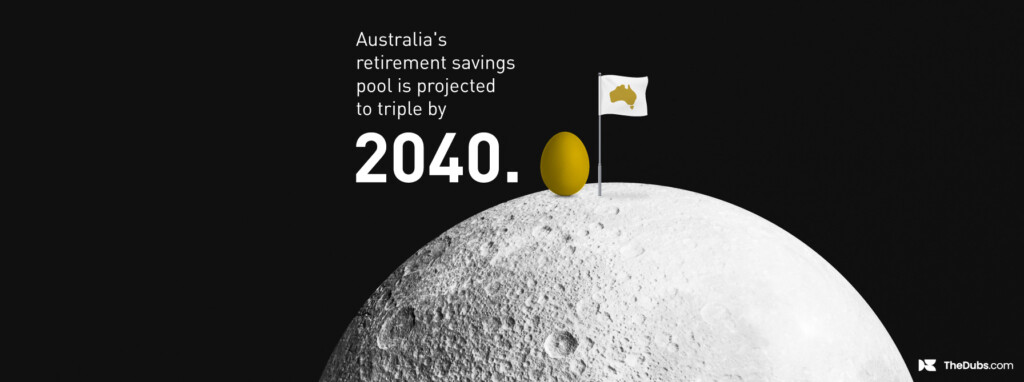Congratulations!! You’ve got approval from senior management to create and launch an always-on content program that will have clients, customers and investors alike clamouring for more and pouring money into the business. Kerching!!
Anyway, that’s what we often hear at the heady and enthusiastic beginning of a content program – and with careful planning and brilliant execution that’s what we sometimes see come to market.
However, let me pass on a cautionary tale of how we’ve also seen it play out from the beginning when the content program was gonna rock like Jagger and Bowie and have them dancing in the street but ended up a total shred sounding more like this – oh dear. (You should watch that BTW – it’s worth it!!)
So where does it all go wrong? Generally at the beginning and snowballs from there.
1. Strategy
This may seem like a no-brainer but we’ve walked into content projects before where no formal strategy exists and it’s chaotic at best with content ideas being thrown against the wall to see what sticks – which is not much.
“ We’ve walked into content projects before where no formal strategy exists and it’s chaotic at best with content ideas being thrown against the wall to see what sticks.”
Get all of your key stakeholders, internal execution team, and external advisers in a room and thrash out the key issues to get everybody aligned and clear on what needs to be done – making sure you’re putting the needs of your audience, not the business first. Make sure this is documented so it can permeate the organisation and simply because it’s easy to get sidetracked over time and the strategy pulls people back together.
2. Destination
“We’ll just publish the content on our website and that will be fine” is sometimes what we hear for where content is going to be housed.
What is often meant by this is the business will use its existing webpage templates to dump articles somewhere on the website or spray the content in various places.
This often looks boring and is a poor user experience which ultimately means the content isn’t valued by the intended audience.
Take time to work out the journey path your audience will need to understand and trust your brand and understand the relevance of your offer to them.
Also look at the interface design to make sure it gives polish to your content display and presents it in a dynamic style that attracts and holds attention. When looking at interface design, user experience (UX) is key to how people will digest the content and is critical if you want your website to convert customers.
Also key for any content destination is a mobile first design as not only do significant portions of the audience view content on-the-go by but key search engines like Google index mobile sitemaps over desktop, so it’s necessary for good search engine optimisation (SEO).
3. Content production
When it’s time for rubber to hit the road and for content to be produced some of the things I’ve heard as to where it will come from include, “there’s some stuff on the intranet we can use”, “we can get our grad (graduate) to knock out some articles” or “just run our press releases and ads”.
Anything on an intranet just sounds dusty and boring while leaving the portrayal of your brand’s reputation to a first year graduate will get compliance in a lather. And while press releases and ads work fine as they are – don’t try to pass them off as content.
It’s actually important to think about the frequency and format of your content. For example, can the organisation source two quality pieces of content per week and publish these to deadline without fail?
It’s also key to look at the mix of your content and where it will be sourced. Does the business have teams already producing analytical papers or market research? Does the business have content gaps on topics needing to be authored by external experts?
To ensure the ongoing content stream doesn’t get stuck on a hamster wheel, mix up the publication of short and long-form editorial. Weave in serialised podcasts on relevant issues and invest in video to convey high value themes. Back all of this up with strong visuals, interactive charting to make the numbers more dynamic and infographics to explain complex issues in a simple way.
4. Content optimisation
Once you’re comfortable there’s a quality stream of content being published on a regular basis through a great content destination it’s important to look at how you can optimise the content to make sure its SEO is excellent and maximising audience traffic flow from organic search.
Key to this is reviewing your content analytics for insights you can action on-page. It’s also important to use strong imagery and avoid bland overly stock images. Make sure all headlines have been optimised for readability and SEO purposes and ensure all body copy has likewise been reviewed so it’s digestible and SEO optimised.
5. Social distribution
The concept of build it and they will just come doesn’t work in content marketing. If your organisation invests in content and takes the time to produce it then you need to actively distribute it externally to the environments where your clients, customers and audience naturally gravitate. All of this of course needs to be guided by a clear distribution strategy.
Social channel distribution will be skewed by whether the finance brand is largely B2B or B2C driven and by geographic region.
It’s important to have an always-on and consistent organic posting schedule and as your follower databases and audience grows you’ll need to consider community management such as responding to all comments, redirecting people with inquiries or how to manage complaints.
Beyond the content created by the business it can help to humanise the brand by introducing ambassadors who can comment on issues and distribute the brand’s content across their own channels. Brand ambassadors can be internal spokespeople such as key executives or they can be external individuals or influencers who have credibility with your key audiences.
Key to the success of social distribution is using the analytics tools of the social platforms to segment and target messaging and content to high value audiences to ensure your content is being seen.
It’s also important to create an overarching media plan so you can understand how your distribution budget is being spent, where and when. The metrics you get back from your media plan can then inform how you optimise future campaigns and provide a benchmark to measure against.
6. Measurement
Successful and sophisticated content marketers centralise, monitor and respond to the data collected right across the content program from content destination benchmark reporting and analytics goal tracking to social media metrics and cost analytics.
By tracking these key data sources you’ll understand how your content is performing with your intended audience, what it’s costing to produce and distribute and whether you’re getting a return on investment with wider brand awareness or active gains in client and customer acquisition.
Lastly, if you follow these six key components you’ll avoid your content marketing program ending up a total shred. We follow these principles for The Financial Marketer and while we may not be a Jagger or Bowie we’d be pretty happy for our publication to be considered a vibing cat – you have to love the internet!!
Learn more about what we do at The Dubs.









